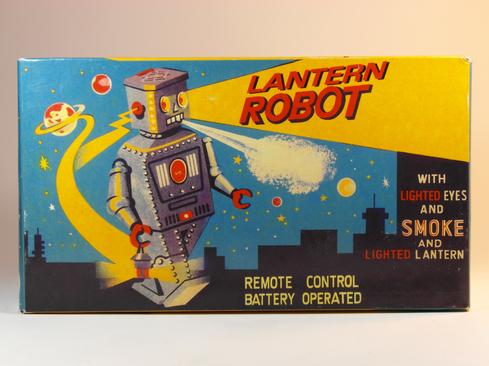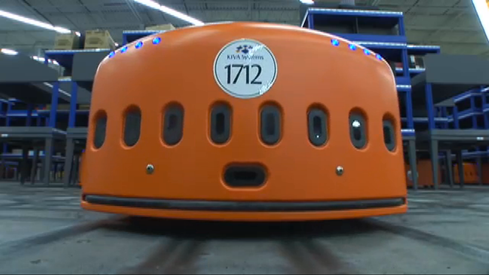Forget lasers, shape-changing, and artificial intelligence. Robots should swim and dispense candy.


Robots Rising: 7 Real-Life Roles
Robots Rising: 7 Real-Life Roles (Click image for larger view and slideshow.)
In Who Framed Roger Rabbit?, film noir temptress Jessica Rabbit insists, "I'm not bad. I'm just drawn that way."
The same can be said about robots in popular culture. They behave badly, but we're to blame. When Roy Batty, a replicant in Blade Runner, gouges the eyes out of his maker, Dr. Eldon Tyrell, all he really wants is to live beyond the four-year lifespan bestowed by Tyrell. When the HAL 9000 kills astronaut Frank Poole in 2001: A Space Odyssey, it does so to preserve itself. (That is, unless you go by the explanation provided in Arthur C. Clarke's follow-up novel, 2010: Odyssey Two -- an endless loop error.) In Westworld, when the robot gunslinger played by Yul Brynner begins killing theme park guests, the problem is "a disease of machinery," or a computer virus.
Robots are not bad. They're just badly programmed. The ostensibly brilliant Dr. Eldon Tyrell limited the lifespan of his replicants as a protective measure when he could've just included a remote kill switch, as seen today in smartphones. HAL's designers somehow managed to ignore Isaac Asimov's Three Laws of Robotics, which first appeared in 1942 -- the one about not harming people is kind of important. And the technicians running the Westworld theme park made the mistake of utilizing real guns that depended on functional heat sensors to keep Westworld's human guests safe while still permitting robots to be targeted. Had these engineers consulted with anyone in corporate risk management, someone might have suggested not using real guns and live ammunition to prevent potential acidents.
I want a robot that will avoid these problems altogether. My robot will not possess sinister intelligence, inhuman strength, or a powerful arsenal of weapons that could be used against me. It will be more like Rosie, from The Jetsons, than Data from Star Trek: The Next Generation or a Cyberdyne Systems Model 101 Terminator.
In order to ensure that there's no potential machine uprising scenario, my robot will be designed as follows:
1. It will be stupid. My robot will not be self-aware, devious, or conscious. It will be a drone. It will follow orders obediently and without question. It won't try to second-guess me, or propose alternative plans. Whatever smarts it has will be reserved for navigation, self-maintenance, and generally staying out of people's way.
2. It will be ugly. Male science fiction writers frequently propose robots in the form of attractive women. This is perhaps understandable, given the isolation of the profession and its focus on something other than reality. But it's a bad idea, not only because it demeans women, but because women could decide they want male robots. Trust me, it will be far better for all involved if our robots are both repulsive and gender neutral. It's already bad enough seeing people paw at their phones.
3. It will be light and rubbery. My robot will not be designed for heavy lifting. It will be light, so it doesn't injure people when it collides with passersby. And given the way that people walk around staring at their phones, count on this happening sooner rather than later.
4. It will be energy efficient. Because it's light, it won't require a significant amount of energy to move around. It will be designed to recharge itself, not unlike the "botlr" robot, "A.L.O.," that recently debuted at the Aloft Hotel in Cupertino, Calif.
5. It will fly. Because it's light and energy efficient, it should be possible to design my robot so it can fly. At this point, I'm thinking it looks something like a cross between a mylar balloon, a jellyfish, and a recreational drone. It will work as a WiFi router, of course. And it will take pictures.
6. It will have suction cups and tendrils. It will need suction cups to remain anchored in the wind. And it will need flexible tendrils to push buttons and pick things up.
7. It will dispense candy. My airborne octopus drone may alarm some people. It can set them at ease by handing out sweets.
8. It will swim. Being water-proof solves a lot of problems and offers a vast expanse for landing. It will also offer a convenient way to obtain fresh fish -- just send it out from the beach to grab the first fish it can find. Try this on land with a deer-hunting robot and you're bound to have problems; to reiterate, you don't want armed robots running amok. Piloting a remote undersea drone to catch fish is probably more fun than you suspect, but you'll want to be sure you clean the internal cargo space: You don't want to store your fish and your candy in the same cargo compartment.
9. It will be amusing. My not-very-bright robot won't be good for complex tasks. It will sweep the floor like a Roomba, probably missing the same corner spots and requiring remote-controlled oversight to finish the job. But it will be colorful and be capable of presenting a Cheshire Cat-style smile, to make itself socially acceptable. It will also come with a library of goofy sound effects and trivia questions, just in case it needs to entertain or promote goodwill.
10. It will be loud and bright. To protect itself against vandalism, my robot will be capable of wailing like a banshee and throwing off light, either pleasant or blinding. This will also make my robot easier to find in the event it gets stolen or gets stuck somewhere.
So there it is. My robot. I'm ready to place an order as soon as it's ready. What about you? What features would you want in a robot?
In its ninth year, Interop New York (Sept. 29 to Oct. 3) is the premier event for the Northeast IT market. Strongly represented vertical industries include financial services, government, and education. Join more than 5,000 attendees to learn about IT leadership, cloud, collaboration, infrastructure, mobility, risk management and security, and SDN, as well as explore 125 exhibitors' offerings. Register with Discount Code MPIWK to save $200 off Total Access & Conference Passes.
About the Author(s)
You May Also Like







